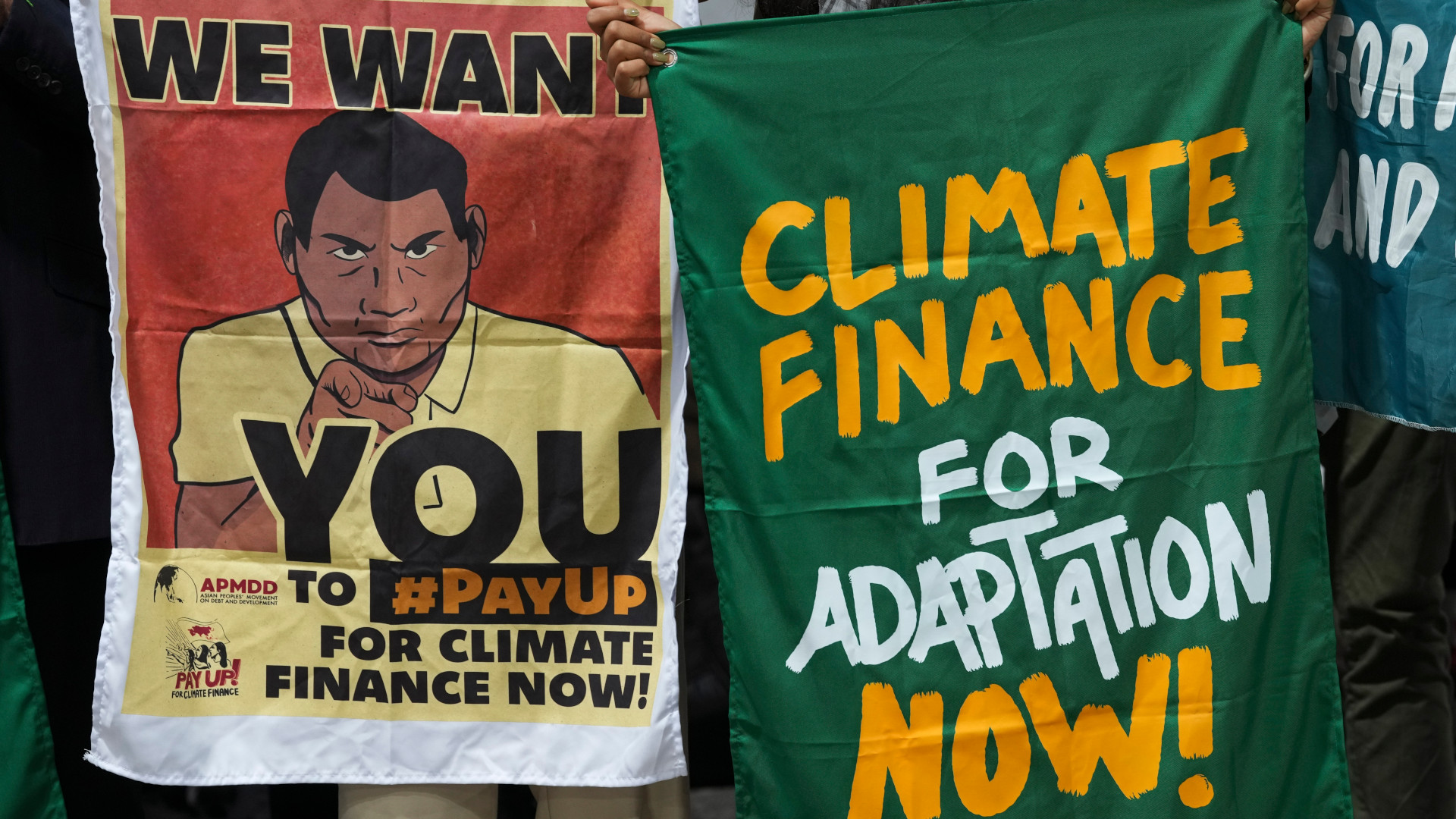
The Chinese written character for “crisis” perfectly frames the art of politics. It consists of two characters: danger and opportunity. In politics, danger to your opponent is opportunity for you.
So stands the Conservative Party of Canada in the wake of a weakened Liberal government struggling to overcome the SNC-Lavalin affair. As voters cast a jaundiced eye at re-electing Justin Trudeau’s Liberals, they will also take a second look at Andrew Scheer’s Conservatives. Scheer’s party needs to ensure it is not wanting when it comes to giving voters what they want.
Poll after poll, including one last month by Abacus Data, suggests that climate change is one of the top three issues for Canadians. Ignoring it or, worse, demonizing it, will hinder, not help, Conservatives gain votes. Happily, politics, principle, and policy can align nicely for a 2019 Conservative climate opportunity.
Politics
If Conservatives believe they will gallop to a healthy majority government based on the SNC-Lavalin scandal alone, they are wrong. The party needs to develop policies that attract new voters rather than relying on old coalitions of traditional voters or just hoping Liberals stay home.
Those new CPC voters are first-time and younger voters, disenchanted Liberals, women and unmotivated progressive conservatives. Each would respond to a stronger and more principled climate message than the party has dared issue so far. Simply put: carbon tax opposition is not actually a climate policy.
First-time and younger voters particularly believe climate change is real and needs to be addressed (84 percent of voters 18-34 in a recent Angus Reid poll). Women are nine points more likely to say climate change is a problem, according to Abacus Data, helping contribute to the CPC’s current gender gap.
Writing off those voters by ignoring or downplaying the threat of climate change will create a brand crisis for the CPC that will rear itself not just in this election but in elections to come. It will place a ceiling on their support. Meanwhile, Liberals disenchanted over their government’s ethics problems, or progressive conservatives worried about Liberal mismanagement and conservative nativism, can be stirred by a new, forward-looking climate policy.
How much does this add up to? According to Abacus Data research from November 2017, half of Canadians won’t contemplate voting for a party that doesn’t have a climate change plan and only 6 percent prefer a party or candidate that ignores the issue.
In the 2015 federal election, only 7.4 percentage points separated the Liberals from the Conservatives. A 4-point shift to the CPC would have them even with either one winning in the end. With current polls showing Conservatives in front, a 3-4 percent “climate gain” would cement a CPC majority victory.
Principles
To build an effective climate policy for Canada different from the Liberal government, the CPC should revert to conservative principles as its guide. Many are relevant:
- Responsibility – to current and future generations, as well as the world, for climate action.
- Conservation – of our natural environment and heritage as a legacy for all by reducing climate impacts.
- Subsidiarity – recognizing that environmental and climate policy decisions reside best within the level of jurisdiction constitutionally responsible and best positioned to deal with them.
- Enterprise – a belief that finding practical business and technological solutions can build prosperity in the inevitable low-carbon economy.
- Individualism – respecting the primacy of the individual over the state and corporation and crafting climate policy that reflects smart government intervention and industry responsibility.
These evergreen principles of traditional conservatism as a basis for climate policy can, in turn, be reinforced by today’s populist conservatism. “Polluter pays” is a populist conservative refrain that actually recognizes the responsibility of corporate polluters to mitigate the environmental damage they cause.
Policy
Choosing the right policy tool is a function of achieving your climate goals and target. The best goal for any climate policy is this: The most emissions reductions at the least economic cost.
While carbon pricing is seen as the most effective tool of all for many experts, it is clearly a non-starter with the CPC. Even if it weren’t, there are limits to the effectiveness of carbon pricing in terms of securing cost-effective emissions reductions equally across the country and across sectors.
So, what is the Conservative path forward?
Avoid the Target Trap
The GHG reduction target is the “original sin” of every climate policy in Canada. Virtually every climate target set in Canada – federally and provincially – has been missed. Establishing overly ambitious, non-viable, politically unachievable targets is bad public policy, bad economic policy, and bad environmental policy. What Canada is missing is a realistic and viable climate target that can actually be achieved.
The Liberal government picked the Harper government’s proposed Paris target, made it its own, and presumed it would inoculate it against Conservative attacks on climate policy. What the CPC must do is re-frame Canada’s climate ambition so it is realistic, principled and achievable. As a first step, CPC should resist setting another “top-down” target for its own climate policy, as was done for Kyoto, Copenhagen and Paris.
New Climate Governance Mechanisms
GHG targets and climate actions must be taken out of the political sphere when it comes to data, analysis and advice. Instead, a Conservative government should develop a “ground-up” series of goals based on actual measurement and application of viable, timely policy measures that result in tangible emissions reductions.
It would do this by creating an independent Climate Advisory Commission with a mandate to review and advise Parliament on a series of five-year, made-in-Canada GHG reduction goals.
These goals should be based on: (a) best scientific evidence and the expected climate impacts on Canada; (b) reduced carbon emissions over defined five-year periods; (c) meeting the jurisdictional responsibilities of all governments; (d) fostering a low-carbon economic future for jobs and competitiveness; and (e) international factors and obligations. The commission would monitor progress and advise on adjustments regularly to Parliament.
Instead of a static, long-term national target that is divorced from short-term political and governmental accountability, the Climate Advisory Commission would advise on building a five-year “carbon budget” that specifies an amount of GHGs that can be emitted; or “carbon savings account goals” (as being set in Manitoba) that set the amount of carbon that must be reduced. This type of approach focuses on actual emissions reductions in manageable, incremental improvements. Each five-year period would contain a series of specific measurable actions aimed at achieving the fixed reduction goal and ensuring progress towards longer term reductions. Shortfalls from any one five-year emission reduction goal would be added to the next five-year carbon reduction goal.
Momentum is crucial to progress. Looking at reductions in shorter and closer time increments focuses on what’s achievable while illuminating the additional steps needed in the next five-year period. Progress spurs more progress.
This form of governance would be original and groundbreaking. It would be a first for Canada at the national level (Manitoba is developing this provincially), and only the second, internationally (the UK has had carbon budgets since 2008). It would liberate us from the party politicization and polarization on the issue, which hinders progress and frustrates and alienates Canadians by de-politicizing the data, evidence and advice. The political debate would shift to means, not ends.
Unified Climate Federalism
A unified climate approach nationally does not require a uniform climate policy approach. Unified means charting a common course, not all necessarily using the same means. This aligns squarely with Conservative federalism principles.
At the same time, Conservatives should embrace a new form of coordinative climate federalism that constitutionally fits within this new governance approach of shared federal/provincial environmental responsibility. The Liberal government’s core mistake on climate change was to shoehorn a new intergovernmental infrastructure into existing provincial plans assuming they would stand fast. It sought a one-size-fits-all approach that does not meet the overriding realities of Canada’s geographic energy economy, sclerotic federalism and clashing electoral cycles.
Even the UN agreements on climate change refer to “common but differentiated responsibilities” between countries as the basis for climate action. As a federation, Canada should subscribe to this same approach. A Conservative federal government would state its jurisdictional competence on climate action and act accordingly, thereby clarifying the field for provinces, territories and municipalities.
A Conservative Climate Tool Box
Having ruled out explicit carbon pricing, Conservatives must now choose from a range of tools that don’t involve direct carbon pricing. These fall into three broad categories: regulations and mandates, financial incentives or voluntary actions. None is perfect alone, but together they can have an impact.
The operating framework needs to be one Conservatives can politically accept. They should dust off the Harper government’s 2007 Turning the Corner plan and update its core elements for today’s reality. Here’s a 10-point Conservative climate plan that is realistic, reasonable and responsible:
- A Clean Fuel Standard to reduce Canada’s greenhouse gas emissions (GHG) through the increased use of lower carbon fuels, energy sources and technologies.
- A Pan-Canadian Industrial Carbon Emission Performance Standard System that aligns current and forthcoming provincial systems. Making sure the provinces have compatible performance standards systems will help business avoid duplication, overlap, and ensure level competitive playing fields.
- A Pan-Canadian Carbon Offsets Market to support industrial compliance with the performance standard system and engage the largely Conservative-supporting agriculture sector into offering financially appealing carbon sequestration credits.
- A Canadian Five-Year “Social Cost of Carbon” Price (the measure of economic harm from carbon emissions expressed as a cost per tonne of carbon) fixed by the independent Climate Advisory Commission rather than an arbitrary rising carbon price schedule.
- Carbon Savings Account Trust paid into by industrial polluters based on the independently set social price of carbon, leveraged by the private sector into direct technology improvements, matched by federal investments.
- Responsible Oilsands Growth (yes, words from Turning the Corner) that maintains the current industrial cap on overall emissions or applies equivalent stringent performance standards.
- A National Home and Commercial Buildings Retrofit Program that (a) reduces emissions and (b) stimulates economic return for small business and suburban homeowners.
- Accelerated National Building Codes and Standards for new residential and commercial houses and buildings.
- International Emissions Reduction Credits via ITMOs (International Trading Mitigation Options), under the Paris climate agreement. Canada could gain carbon credits from this with our established carbon capture and storage and small modular nuclear reactor technologies knowledge.
- A Provincial Climate Incentive Transfer from Ottawa that provides a compensatory incentive to provinces that establish plans to reduce emissions from major economic sectors defined as comprising a high percentage of provincial emissions and share of the provincial economy.
A reasonable, realistic policy alternative that is grounded in conservative principles is not as much a stretch as current Conservatives might think. Right now, Liberals are framing Conservatives as anti-climate due to their singular opposition to a carbon tax and unwillingness to put a real climate policy alternative before Canadians. Climate change action can represent a real electoral opportunity for the Conservatives should they choose to seize the opportunity.
Photo: Conservative Leader Andrew Scheer speaks to members of caucus on Parliament Hill in Ottawa on March 20, 2019. THE CANADIAN PRESS/Adrian Wyld
Do you have something to say about the article you just read? Be part of the Policy Options discussion, and send in your own submission. Here is a link on how to do it. | Souhaitez-vous réagir à cet article ? Joignez-vous aux débats d’Options politiques et soumettez-nous votre texte en suivant ces directives.








